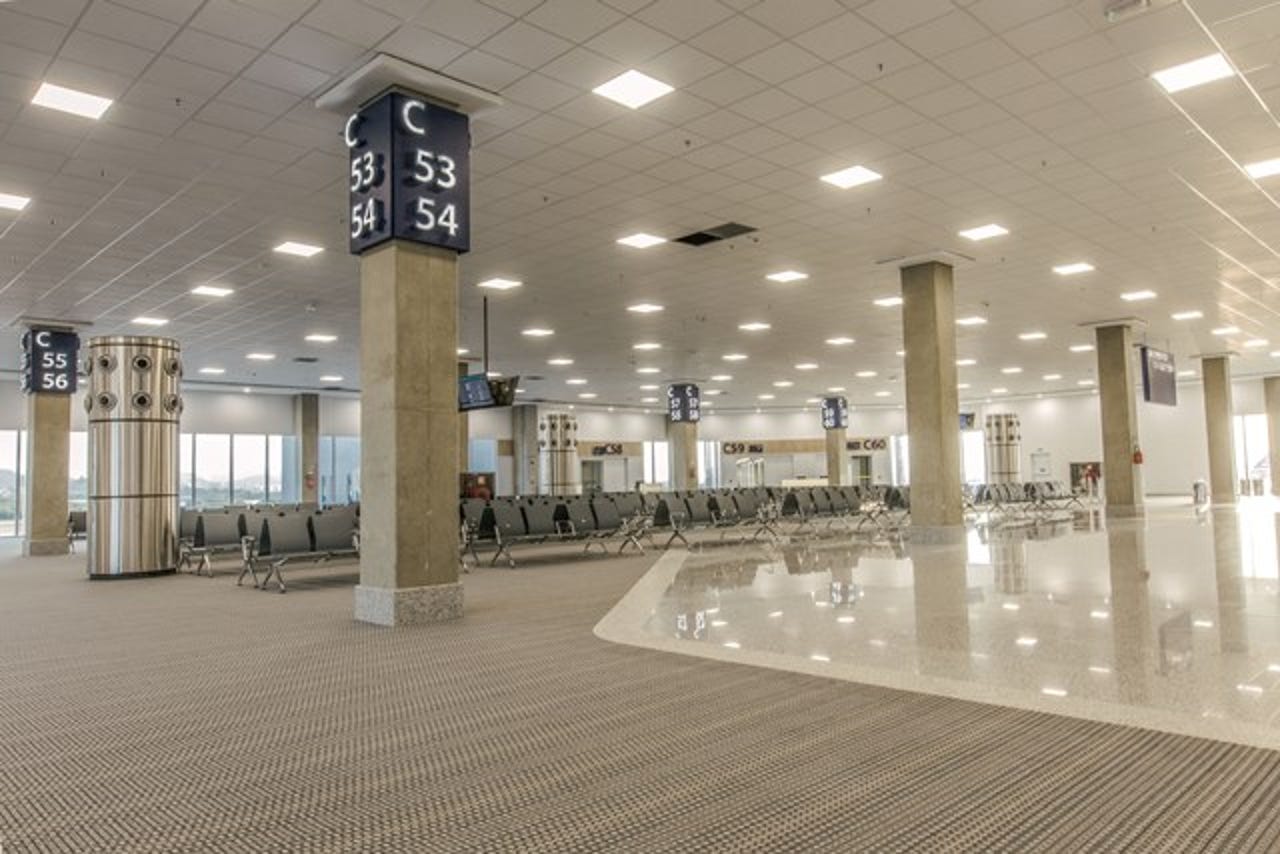Rio airport completes IT overhaul ahead of Olympics


Rio de Janeiro's international airport (RioGaleão) has just completed a major technology overhaul aimed at improving operations and providing better services to passengers.
Rio Olympics
As the gateway to the 2016 Summer Olympic Games, which will commence in a month's time, the consortium that took over the hub's management in 2014 had the challenge to broaden, renew, and modernize an aging IT estate in time for the sporting competitions.
"We did all the planning, built the team and found the partners in an extremely tight timeframe -- it would be fair to say we progressed 20 years in 2 when it comes to the IT infrastructure," RioGaleão CIO Alexandre Villeroy told ZDNet.
Within that timeframe, the airport's entire network infrastructure was replaced at a cost of R$90 million ($27.3 million). This included the roll out of a 100km optic ring to support wireless services and some 3,000 proximity beacons in partnership with Hewlett Packard Enterprise (HPE) and its subsidiary Aruba.
The beacons, spread across the whole airport, broadcast radio signals at regular intervals that can be captured and interpreted by devices equipped with the recently launched RioGaleão app, which was also part of the overhaul and is based on Aruba's cloud-hosted mobile platform Meridian.
In addition to the network infrastructure refresh, the airport also deployed new core systems such as an Oracle enterprise resource planning (ERP) suite and a billing platform, provided by Ericsson.
"[The IT overhaul] was literally like changing the wing of a plane with it flying -- and do all that in a way that didn't cause an impact to the airport operations," Villeroy added.
Improving the infrastructure
According to the airport's CIO, working on the network infrastructure to enable better wireless services for passengers as well as other users such as airlines, cafes, restaurants, and shops was a fundamental project and something that has consumed almost all of the team's bandwidth for the last couple of years.
"Good Wi-Fi is something that is expected as standard at any major airport and this is what we are providing: a state-of-the-art service for passengers, who hopefully will choose to be here longer and travel to and from here more often," Villeroy said.
see also
"Airports globally are becoming more dependent upon commercial initiatives and revenues rather than just the flights. That's why it's crucial for us to give passengers an environment that becomes part of their journey -- a place where they want to spend more time and money," he added.
"The importance of having a robust Wi-Fi network is also often underestimated, it is something considered simple since we all have it at home. But when it is a network carrying core applications and serving the entire airport's own operations, its tenants and passengers, then the perception of the whole thing changes."
Working with channel partner ZIVA on the installation, the airport's upgrade now includes Aruba 200 Series 802.11ac access points and the 7200 Series Mobility Controller, HPE FlexNetwork 5130 HI Series switches, HPE FlexFabric 7910 switch chassis, and HPE/Aruba network management software to replace the outdated and miscellaneous legacy infrastructure.
Going forward, the airport is looking into other ways to benefit from the new network, such as personnel access to airport operational and maintenance systems, control and management of Internet of Things (IoT) devices such as air conditioning, lighting, and water systems, and allowing vendors that provide baggage and aircraft services to access their own operational systems via the Wi-Fi network.
The airport is also exploring integration with aircraft to download information from telemetry and other onboard systems, as well as Wi-Fi onboard the aircraft.
Providing better passenger services
With the RioGaleão app, the international hub wants to capitalize on the heavy passenger traffic expected during the Olympic Games -- some 90,000 people are expected to travel through the airport daily during that time, double the usual amount -- and offer a better customer experience.
The app offers location-based features aimed at improving visitor engagement: The intention is to have a closer relationship with travelers, along the lines of what airlines have tried to do over the years. Among the app features, passengers can pay for airport parking, and access indoor mapping, as well as turn-by-turn directions and flight status.
It is expected that as the airport analyzes visitor location-based movement patterns of popular locations and routes, extra functionality offered by the tool will be unlocked in future, such as venue-specific content and push notifications sent to app users during their visits.
According to Villeroy, the airport is also in talks with airlines to aggregate other services such as mobile check-in to the app, but that is something that might still take some time to happen.
"People will continue to use the apps provided by airlines to check in, but it is a matter of time until airports concentrate all of that. These things will change according to the value passengers see in a particular tool," the CIO said.
As well as HPE/Aruba, Accenture Digital was also involved in the project and was hired to cover the design, development, and maintenance aspects of the project. "Having a partner like Accenture means you can create the app concept without worrying about the integration of the various components -- the architecture, the service layer, the transactional layer -- and none of the work done is thrown away when you do upgrades or add new features," the CIO said.
Villeroy recalled that the hardest part of the job was to get the airport's nimble 50-person IT team to work in a high performance setting, as well as making some key choices related to the technology itself and the partners to deliver it.
"We had to confirm that the network choice was right and go for it. As for suppliers, you know they are right when they support the client's choices even if they are not within what's typically expected and in the face of challenges, they fall together with you, learn, move on and get the job done," the CIO concluded.
*Angelica Mari traveled to Rio de Janeiro as a guest of HPE